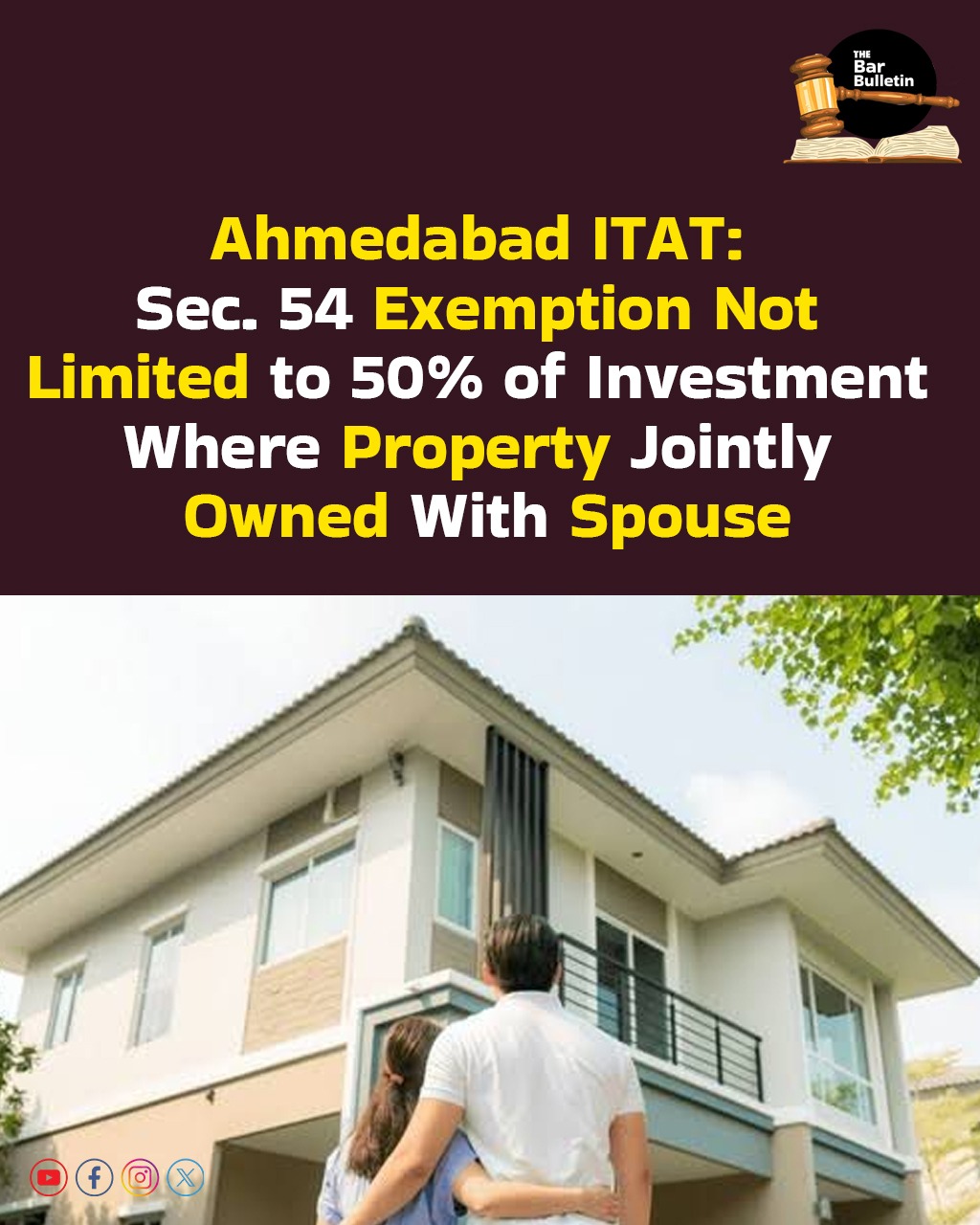The Ahmedabad ITAT recently clarified that while computing capital gains in case of property investment, the sale consideration can be substituted by stamp duty value by invoking Section 50C of the Income Tax Act. However, the deduction under Section 54 in the hands of the appellant-husband cannot be restricted to only 50% of the investment in the new house, simply based on the fact that the new property was jointly owned, ignoring the actual contribution ratio between the appellant and his wife.
The Tribunal therefore upholds the application of Section 50C for stamp value as full consideration and directed the AO to verify the actual investment ratio (2:1) in the new property based on contributions from sale proceeds and affidavit, and then allow proportionate exemption under Section 54 accordingly. Additionally, the Tribunal allowed the claim for the indexed cost of improvement, as bills/work details were provided.
The Division Bench comprising Dr. BRR Kumar (Vice President) and Siddhartha Nautiyal (Judicial Member) observed that it is mandatory to adopt the stamp duty value as full consideration for capital gains computation under Section 50 when the same is higher than the sale deed value. Thus, there was no infirmity if no DVO reference was requested.
Coming to the exemption under Section 54, the Bench highlighted that the actual contribution to the new property from sale proceeds is relevant for determining the exemption proportion, not merely joint registration. The Bench therefore asked to verify the ratio via affidavit and sources, even if the minor’s clubbed income was involved.
Briefly, in this case, the appellant-taxpayer, along with four co-owners, including his minor daughter, whose income was clubbed with his, had sold an immovable property for Rs. 41 lacs, which is shared equally. Since the stamp duty value was Rs. 67.14 lacs and the appellant did not file the ITR, reassessment proceedings u/s 147 were initiated. In response, the appellant filed ITR declaring income of Rs. 1,690/- and long-term capital loss of Rs. 8.70 lacs, after calculating indexed cost of acquisition, cost of improvement, and exemption under Section 54 for investment in new residential property.
The AO, however, adopted stamp value under Section 50C, disallowed improvement cost for lack of bank proof/source evidence, and restricted Section 54 exemption to 50% as the new property was jointly purchased with the wife, with no clear share. He also computed the long-term capital gain at Rs. 15.99 lacs. The findings of the AO were confirmed by the CIT(A).
Appearances:
Advocate Jigar Shah, for the Appellant/ Taxpayer
Advocate Rajenkumar M. Vasavda, for the Respondent/ Revenue

